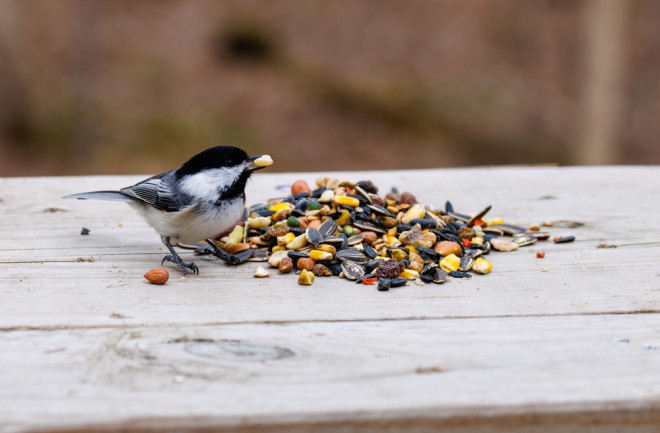Faulty memory sometimes gets the best of us, like when we're scrambling to find a lost pair of keys or a phone. There's good reason to invest in recent research on the humble chickadee, which apparently has the mind of a steel trap. In fact, these birds can remember things so well that they could help us understand how a memory takes form.
Researchers from Columbia University’s Zuckerman Institute took a closer look at the brains of black-capped chickadees, an endeavor that has hatched an exciting revelation about the making of memories.
It turns out that neural activity in chickadees’ brains allows them to store memories of locations in the form of distinct ‘barcodes.' Researchers believe this activity may even occur in other animal brains and human brains. Their findings have been detailed in a new paper released in the journal Cell.
Memorizing to Survive
The ability of chickadees to memorize thousands of locations a day comes in handy during winter; while other birds migrate during this time, chickadees do not. Recalling the exact spot where they've hidden food during warmer months is essential for their survival.
Like all other vertebrates (including humans), chickadees possess a hippocampus, a vital brain structure that facilitates memory. However, the specific neural activity in the hippocampus that encodes memories has eluded scientists.
“The question we’re trying to answer is, ‘What physically is a memory?’” said Selmaan Chettih, a co-first author of the study, in a press release.
To find an explanation for this conundrum, the research team turned to chickadees. They crafted indoor arenas for the birds to stash food in, observing their brains in the process.
“Scientists have marveled at the memory of these birds for decades, but what has been a mystery is what was going on in their brains to support these memories,” said Dmitriy Aronov, a principal investigator at the Zuckerman Institute and an assistant professor of neuroscience at Columbia’s Vagelos College of Physicians and Surgeons, in a press release. “Now we have neural recording and behavior tracking tools at our disposal to advance our knowledge of how these birds are capable of these feats of memory.”
Read More: In the Bird World, It Takes Big Brains or Big Guts to Survive in Extremes
Forming the Barcodes
In the experiments, a black-capped chickadee would hide sunflower seeds in the arena’s holes while the team monitored activity in its hippocampus. Six cameras were also set up to record the birds’ movements, and an artificial intelligence system tracked them as they stored and retrieved seeds.
The team found that when a chickadee stored a seed, hippocampal neurons fired off in a sudden pattern that would later reactivate when the bird retrieved that specific food cache.
“These are very striking patterns of activity, but they’re very brief — only about a second long on average,” said Chettih. “If you didn’t know exactly when and why they happened, it would be very easy to miss them.”
Looking through their data, the team concluded that describing these patterns as neural 'barcodes' seemed fitting.
According to the researchers, the barcode patterns exist independently from the activity of place cells, which are hippocampal neurons that encode memories of locations. Every barcode represents a distinct food-caching event, even when the stashes are stored in the same location at different times or when multiple stashes near each other are done in quick succession.
“We find that place cells don’t actually change when birds form new memories. Instead, during food caching, there are additional patterns of activity beyond those seen with place cells,” said Aronov.
One of the remaining questions for researchers is whether or not the barcoding process is a common occurrence in other animals and humans, which future studies hope to resolve.
“If you think about how people define themselves, who they think they are, their sense of self, then episodic memories of particular events are central to that,” said Chettih. “That’s what we’re trying to understand.”
Read More: The Rare Courtship of Birds-of-Paradise
Article Sources:
Our writers at Discovermagazine.com use peer-reviewed studies and high-quality sources for our articles, and our editors review them for accuracy and trustworthiness. Review the sources used below for this article:
Cell. Barcoding of episodic memories in the hippocampus of a food-caching bird.
Britannica. Hippocampus

